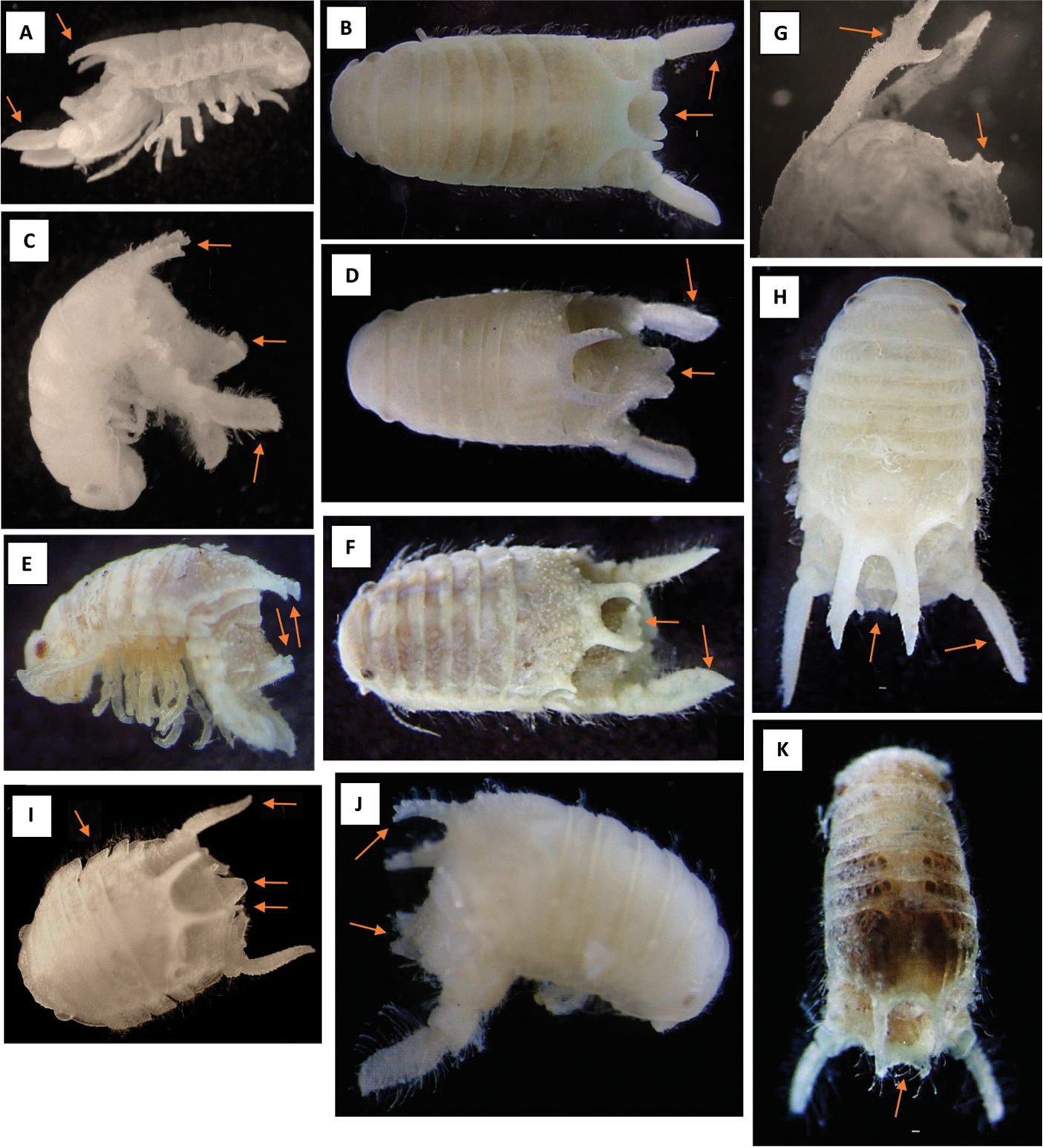
|
||
|
Main features of adult males (stage 8) of the NE Atlantic-Black Sea axis Dynamene spp. A, B D. bidentata (S. Wales). Arrows indicate shape of the bidentate process (A), uropods (A, B) and pleotelsonic boss (B) C, D D. magnitorata (Roscoff, France). Arrows indicate shape of the bidentate process (C), the uropods (C, D) and the pleotelsonic boss (C, D). Note the difference in the shape of the boss and the ends of the arms of the bidentate process to those of D. bidentata E, F D. edwardsi (E Canaries F Azores). Arrows indicate shape of the bidentate process (E, F), uropods (F) and pleotelsonic boss (E, F). Specimen in E shows relatively little dorso-lateral setation, whilst that in F is hirsute. Note the differences in the shape of the boss and the tips of the arms of the bidentate process compared to those of D. bidentata and D. magnitorata G, H D. bifida (France, Mediterranean). Arrows indicate shape of the bidentate process (G, H), uropodal exopod (H) and pleotelsonic boss (G). Note the large accessory process on each arm of the bidentate process, the small sessile pleotelsonic boss and the long narrow uropodal exopods I D. tubicauda (Bay of Naples, Italy). Arrows indicate the unique body shape, tubular respiratory channel, peg-like pleotelsonic bosses, and the curved uropodal exopods J, K D. bicolor (Bay of Naples, Italy). Arrows indicate shape of the bidentate process (J), and pleotelsonic boss (J, K). Note in particular the rugose nature of the dorsal surface of the bidentate arms, and the triangular shape of each half of the boss – in specimens from the Black Sea the boss is of a similar shape but much less prominent. |